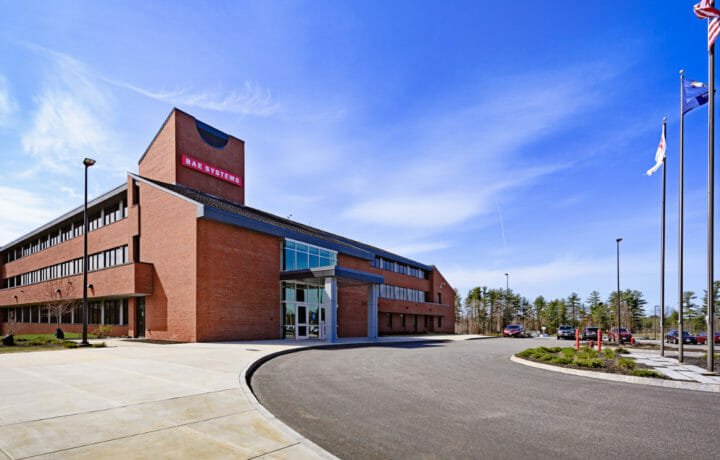Last year, international aerospace and defense firm BAE Systems generated $16.85 billion in worldwide sales. Its U.S. subsidiary remains heavily involved in defense programs, with a strong presence in electronic warfare, armored vehicles, and multiple ship programs.
The company is having a very strong 2025.
Army Programs Rolling Along
Last week, BAE Systems announced that it had signed a research and development (R&D) agreement with the United States Army for the 52-caliber version of the service’s M109 self-propelled howitzer prototype. The M109-52 is an upgraded version of the current 39-caliber M109A7 platform. The new model will be armed with a Rheinmetall L42 155mm, 52-caliber main gun.
The Cooperative Research and Development Agreement (CRADA) between BAE Systems and the U.S. Army Combat Capabilities Development Command Armaments Center (DEVCOM-AC) will build upon previous work and testing carried out by entities. Work will take place at the Picatinny Arsenal in Wharton, New Jersey, and at BAE Systems’ robust U.S.-based defense industrial base, including facilities in Anniston, Alabama; Elgin, Oklahoma; Minneapolis, Minnesota; Sterling Heights, Michigan; and York, Pennsylvania.
“We are working with DEVCOM-AC to continue modernizing the U.S. Army’s long-range precision fires needs,” said Dan Furber, artillery product line director for BAE Systems’ Combat Mission Systems business. “We’re bringing together battle-proven systems with mature technologies to secure a significant leap forward in capability at a much lower cost – that’s the power in partnership.”
Strong With the U.S. Space Force
The new agreement with the Army follows another $1.2 billion contract issued by U.S. Space Systems Command to provide the U.S. Space Force, the sixth and newest branch of the U.S. military, with missile tracking satellite capabilities.
The Resilient Missile Warning & Tracking (RMWT) – Medium Earth Orbit (MEO) Epoch 2 program calls for the development and production of 10 spacecraft with a four-year delivery for the vehicles and five years of operations and support.
It will be overseen by BAE Systems Space and Mission Systems, based in Broomfield, Colorado. It was formerly Ball Aerospace and was acquired by BAE Systems last year. The firm will further develop the ground system that will manage the satellite constellation. That includes the delivery of the mission management, command and control (C2), and mission operations solutions that will enhance the program’s operational efficiency.
“This effort builds on our capabilities to facilitate low-cost, integrated satellite defense programs that bring together payload and bus builds, while managing ground support, operations and sustainment,” said Thai Sheridan, vice president and general manager of Military Space for BAE Systems Space & Mission Systems. “Our system enables close coordination through a ‘one-team’ approach across capabilities that are critical for missile warning and tracking success.”
The RMWT satellites were designed to detect and track a variety of threats, including intercontinental ballistic missiles and maneuvering hypersonic missiles. It will further build upon the ongoing support of the Department of Defense and Space Force satellite constellations that enhance national security and government resiliency across the enterprise, BAE Systems emphasized.
The first delivery of Epoch 2 is currently scheduled for fiscal year 2029 (FY29).
Dual Band Decoys for the U.S. Navy
The United States Navy also selected the defense contractor to develop its Dual Band Decoy (DBD), an advanced radio frequency countermeasure that can shield fighter jets from enemy attacks. According to BAE Systems, it will improve upon its existing “combat-proven” AN/ALE-55 Fiber-Optic Towed Decoy, which will consist of a towed unit connected by a fiber-optic cable to the electronic warfare (EW) equipment onboard the aircraft. It can disrupt enemy radars and even lure missiles away from their targets.
Work on the DBD will be carried out at the BAE Systems’ facilities in Nashua, N.H., while it will be first fielded on the U.S. Navy’s carrier-based Boeing F/A-18E/F Super Hornets.
New Facility in Scotland
BAE Systems also announced that it had opened a new assembly and outfit hall in Glasgow, Scotland, to ensure the timely delivery of the next generation of warships for the UK’s Royal Navy. It is part of a $411 million modernization and digitalization of the company’s operations in Glasgow and will be named to honor Janet Harvey, a World War II female shipyard electrician.
The facility will accommodate up to 500 workers per shift and support the construction of two Type 26 frigates side by side.




